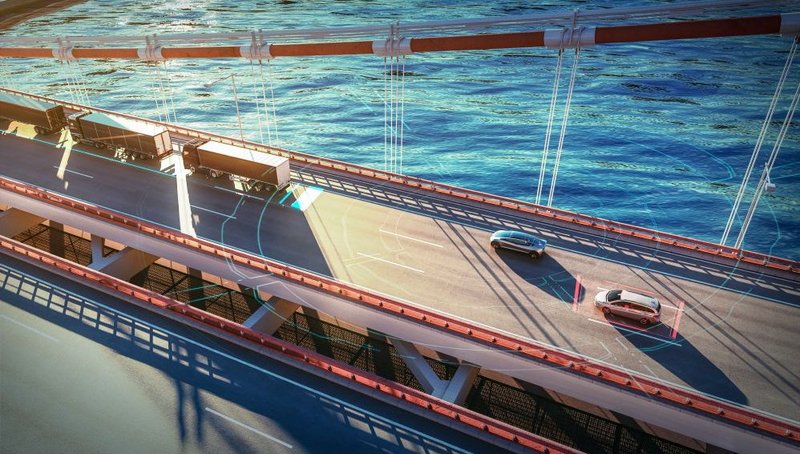Autonomous Mobility
Background Articles
Here you can find background articles on the topics we presented to you at the TechSow Around the World 2021 theme day on automated and autonomous driving.
Automated commercial vehicles: Efficient logistics for economic development
A conventional commercial vehicle is on the move for about nine hours a day, that means only about a third of the day. The limiting factor is the driver, who is restricted by drivers' working hours. A fully automated vehicle, on the contrary, can operate almost around the clock on certain routes. As a result, the actual benefit is significantly greater than that of a passenger car - a fully automated truck immediately generates real value, which is reflected in the total cost of ownership (TCO), being a reduced by a third. Fully automated trucks are therefore a true economic factor... (Read the article - docx (66KB))
From Vision to Perception: How data fusion gives vehicles a seventh sense
How can safety and assistance systems reliably detect hazards and obstacles? Continental relies on a "From Vision to Perception" approach. Vehicles should not only be able to see situations in traffic (vision), but also understand them (perception). To give vehicles something like a seventh sense, to enable them to interpret even complex traffic scenarios and act accordingly, a wide variety of sensor data is fused together. Artificial intelligence helps in this process... (Read the article - docx (65KB))
Seamless Mobility: Everything Needs to be Connected
Around 1.3 million people are killed in traffic crashes worldwide annually. Over 1.2 billion people spend more than 50 minutes a day in their vehicles – much of it in traffic jams. Smart and shared transport concepts can reduce traffic congestion – not only in cities – leading to less congestion and fewer crashes. To achieve this, the mobility of the future must adapt to people's individual needs, starting with the seamless interaction between different mobility options and concepts. The buzzword here is: Networking beyond technology. This, in turn, will only work if the technical prerequisites are right. That's why Continental has identified multiple starting points to drive the issue forward... (Read the article - docx (64KB))
AV Regulations: Uniform Standards Pave the Way to Autonomous Driving
Whether and when autonomous driving is possible on European roads is decided to a large extent by the United Nations. Their draft laws regulate the industry, provide the legal framework, and create global standards. As part of the advisory body, Continental is actively involved in the debates - and is helping to make autonomous driving a reality.... (Read the article - docx (65KB))
Autonomous mobility: The traffic of the future is highly complex
Huge amount of data is generated during the testing of autonomous vehicles. With the help of data from prototype vehicles, but also the individual sensor data from vehicles that are already on the road, Continental is able to continuously develop the driver assistance functions. The recorded real journeys are saved and can then be used for virtual run throughs again and again with new software versions. That results in AI models that are so extensive and detailed that they can represent any traffic situation imaginable. Continental's demand is clear: The systems must work at all times and in all places... (Read the article - docx (63KB))
Back to overview TechShow Around the World | EXCLUSIVE.


